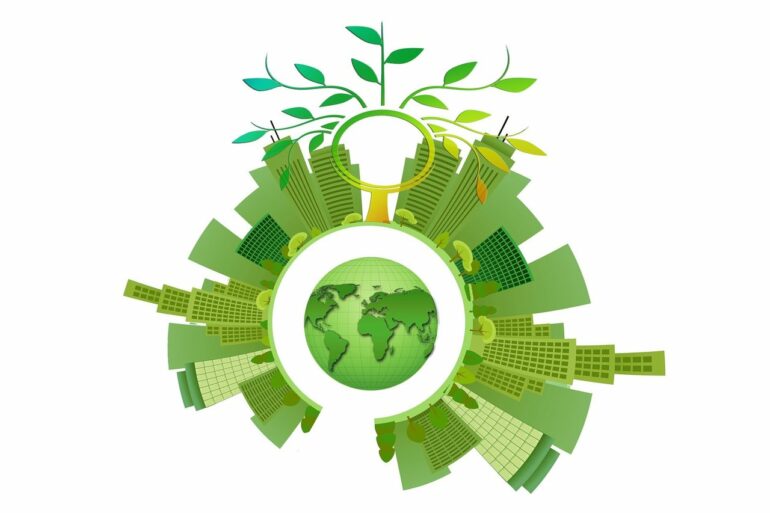Decarbonization scenarios produced by BP, Royal Dutch Shell and Equinor are incompatible with Paris Agreement goals for a safe and habitable planet.
This is the finding of new research underscoring how global decarbonization scenarios outlined by these energy companies show delayed reductions in fossil fuel consumption and run the risk of overshooting vital climate goals. Led by research organization Climate Analytics and including Imperial College London researchers, the study is published today in Nature Communications.
Scenarios are produced by public, commercial and academic institutions and project what future energy requirements, and resultant emissions, would look like. These scenarios inform planning across the globe by governments and other organizations aiming to determine how rapidly different sectors must reduce greenhouse gas emissions.
The scenarios are built by predicting future energy requirements for different economic sectors, such as agriculture and manufacturing, and projecting what energy sources would be needed to supply them, such as fossil fuels, nuclear, or renewable power. These projections of the future energy mix are then used to estimate what the resultant carbon emissions would be.
Fossil fuel companies have produced their own scenarios for future world energy consumption for many decades, but in recent years they have moved to also include decarbonization objectives and resulting climate outcomes.
However, the underlying assumptions of the scenarios to back up their claims of Paris Agreement consistency are not always clear. This makes them hard to compare to scenarios devised by the scientific community, such as those used by the Intergovernmental Panel on Climate Change.
Now, researchers have analyzed six institutional scenarios published between 2020 and mid-2021 and calculated what the temperature outcomes for these scenarios are, using an open-source methodology, and a transparent set of criteria to map these temperature outcomes to the objectives of the Paris Agreement.
The scenarios include four from the oil majors (two from BP, one from Royal Dutch Shell, and one from Equinor), and two developed by the International Energy Agency (IEA). The results show that most of the evaluated scenarios would be classified as ‘Lower 2°C pathways’ (i.e., pathways that keep peak warming below 2°C, with a 66% likelihood or more).
Dr. Robert Brecha, co-lead author of the study from Climate Analytics, says that “most of the scenarios we evaluated would be classified as inconsistent with the Paris Agreement as they fail to limit warming to ‘well below 2 ̊C, let alone 1.5 ̊C, and would exceed the 1.5 ̊C warming limit by a significant margin.”
Equinor’s “Rebalance” scenario peaks at a median warming of 1.73°C above pre-industrial levels in 2060, BP’s “Rapid” at 1.73°C in 2058, Shell’s “Sky” at 1.81°C in 2069, and the IEA’s sustainable development scenario (SDS) at 1.78°C in 2056. BP’s Net Zero scenario results in a median peak warming of 1.65°C, too high to be consistent with the Paris Agreement criteria—every fraction of a degree matters.
Only the International Energy Agency (IEA) Net Zero 2050 scenario is aligned with the criteria for Paris Agreement consistency that the researchers applied in the study.
Bill Hare, CEO and Senior Scientist at Climate Analytics, says that “even temporarily exceeding the 1.5°C warming would lead to catastrophic impacts and severely weaken our ability to adapt to climate change.”
Co-author Dr. Robin Lamboll, from the Centre for Environmental Policy at Imperial, says that “it’s good that traditionally fossil-based institutions are planning for the upcoming transition to clean energy.”
“However, it’s important that we don’t allow oil companies to mark their own work when providing suggestions for how the world can transition away from fossil fuels in a way that meets the Paris Agreement. It’s also important to be aware of these biases when databases of scenarios like this are used to frame what is possible and what is ‘radical’ in terms of climate goals.”
In addition to temperature outcomes, the authors assessed what features of the projected energy systems lead to a given scenario satisfying (or not) the Paris Agreement. While the development of renewable energy sources in the analyzed scenarios is similar to that in other scenarios that meet the Paris Agreement goals, they project notably high coal and gas use.
Some scenarios offset the emissions from coal use with reforestation, but the analysis shows this is insufficient. Dr. Lamboll says that “although protecting existing forests and afforesting more regions is good, in a world of limited land and increasingly challenging growing conditions, it is unwise to rely too heavily on forests to save us from continued use of fossil fuels.”
“Furthermore, coal use is particularly noxious for health reasons quite unrelated to climate change, and should not play a role in our future even if we can grow forests or deploy negative emissions technologies to counteract the carbon.”
The study gives policymakers the tools to critically assess scenarios published by a number of public, commercial and academic institutions describing how they will meet the Paris Agreement goals.
Dr. Matthew Gidden, co-author of the study from Climate Analytics, says that “institutional assessments have historically been opaque on climate outcomes. Our study provides a direct line of sight from pathways to temperature. Governments should use these tools to carry out a robust assessment of the energy-system transformation to meet the Paris Agreement goals.”
More information:
Robert Brecha, Institutional decarbonization scenarios evaluated against the Paris Agreement 1.5 °C goal, Nature Communications (2022). DOI: 10.1038/s41467-022-31734-1. www.nature.com/articles/s41467-022-31734-1
Provided by
Imperial College London
Citation:
Fossil fuel companies’ projections won’t meet Paris Agreement climate goals (2022, August 16)



